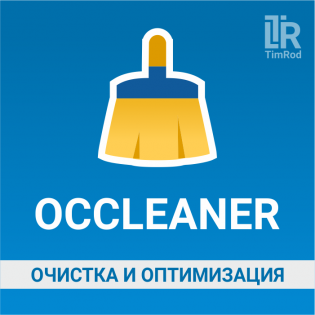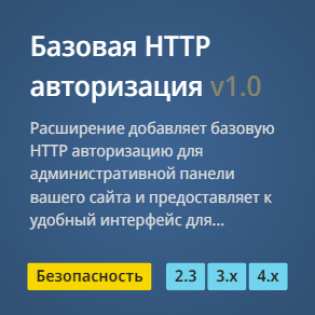The best selling templates and extensions in November 2025: Gallery RB, Strizh: social login, CatKeeper - cart storage, Yoga template.
The best selling templates and extensions in November 2025: Gallery RB, Strizh: social login, CatKeeper - cart storage, Yoga template.
11.11 - big sale on Green Friday! From November 11 to 14, special discounts apply to modules and templates for OpenCart!
How to change the OpenCart admin URL - simply and safely

By default, the OpenCart admin panel is located at /admin/. This is well-known to attackers and various bots. Changing or hiding this URL is a simple way to reduce junk in your logs and brute-force attempts. Below are two clear options for OpenCart 1.5 / 2.x / 3.x (including ocStore 3.0.3.9): rename the folder or set up a “virtual” URL via web server rules.
Before you start
- Back up files and database.
-
Find out the absolute path to the site (e.g.,
/var/www/site/) and the domain (https://example.com). - If you use cache/OPcache – plan to clear or restart it.
-
For OpenCart and ocStore 3 remember about
DIR_STORAGE(often placed outside the site root).
Method 1. Rename the admin folder
-
Rename the directory
admin– for example, tosecret-admin. -
Update
admin/config.phpwith the new URL and correct paths.
OpenCart 3 / ocStore 3
// HTTP
define('HTTP_SERVER', 'https://example.com/secret-admin/');
// HTTPS
define('HTTPS\_SERVER', '[https://example.com/secret-admin/](https://example.com/secret-admin/)');
// DIR
define('DIR\_APPLICATION', '/var/www/site/secret-admin/');
define('DIR\_SYSTEM', '/var/www/site/system/');
define('DIR\_IMAGE', '/var/www/site/image/');
define('DIR\_STORAGE', '/var/www/site/system/storage/'); // or external path
define('DIR\_CATALOG', '/var/www/site/catalog/');
define('DIR\_LANGUAGE', DIR\_APPLICATION . 'language/');
define('DIR\_TEMPLATE', DIR\_APPLICATION . 'view/template/');
define('DIR\_CONFIG', DIR\_SYSTEM . 'config/');
define('DIR\_CACHE', DIR\_STORAGE . 'cache/');
define('DIR\_DOWNLOAD', DIR\_STORAGE . 'download/');
define('DIR\_LOGS', DIR\_STORAGE . 'logs/');
define('DIR\_MODIFICATION', DIR\_STORAGE . 'modification/');
define('DIR\_SESSION', DIR\_STORAGE . 'session/');
define('DIR\_UPLOAD', DIR\_STORAGE . 'upload/');
OpenCart 2.0–2.3
// HTTP/HTTPS
define('HTTP_SERVER', 'https://example.com/secret-admin/');
define('HTTPS_SERVER', 'https://example.com/secret-admin/');
// DIR
define('DIR\_APPLICATION', '/var/www/site/secret-admin/');
define('DIR\_SYSTEM', '/var/www/site/system/');
define('DIR\_IMAGE', '/var/www/site/image/');
define('DIR\_CATALOG', '/var/www/site/catalog/');
define('DIR\_LANGUAGE', DIR\_APPLICATION . 'language/');
define('DIR\_TEMPLATE', DIR\_APPLICATION . 'view/template/');
define('DIR\_CONFIG', DIR\_SYSTEM . 'config/');
// Other DIR\_\* — depending on your build (often inside system/storage)
OpenCart 1.5.x
// HTTP
define('HTTP_SERVER', 'https://example.com/secret-admin/');
// Front:
define('HTTP_CATALOG', 'https://example.com/');
// DIR
define('DIR\_APPLICATION', '/var/www/site/secret-admin/');
define('DIR\_SYSTEM', '/var/www/site/system/');
define('DIR\_IMAGE', '/var/www/site/image/');
define('DIR\_CATALOG', '/var/www/site/catalog/');
After editing, clear caches (in 2.x/3.x: “Extensions – Modifications – Refresh”; if admin is unavailable – manually delete system/storage/cache and system/storage/modification) and test login with the new address.
Pros: works “out of the box”, OpenCart/ocStore generates correct links.
Cons: you must remember the new folder name and set paths carefully.
Method 2. “Virtual” URL via Rewrite (keep the folder)
The idea: the folder remains /admin/, but externally you log in via /cp/. This requires changing the visible HTTP_SERVER and adding web server rules.
-
Keep the
admindirectory as is. -
In
admin/config.phpset the “visible” URL:
// Visible addresses
define('HTTP_SERVER', 'https://example.com/cp/');
define('HTTPS_SERVER', 'https://example.com/cp/');
// Physical paths — to actual admin folder
define('DIR\_APPLICATION', '/var/www/site/admin/');
Apache (.htaccess in site root)
RewriteEngine On
# Serve /cp/ from physical /admin/
RewriteRule ^cp(/.\*)?\$ admin\$1 \[L]
# (Optional) Block direct /admin/
RewriteRule ^admin(/.\*)?\$ - \[R=404,L]
Nginx (inside server { ... })
# Visible URL
location ^~ /cp/ {
rewrite ^/cp/(.*)$ /admin/$1 last;
}
# (Optional) Block direct /admin/
location ^\~ /admin/ {
return 404;
}
Restart the web server, clear OpenCart caches – and access via /cp/.
Pros: no changes to file structure.
Cons: must configure rules correctly to avoid breaking existing redirects.
More ways to improve security
- Basic Auth for admin – an extra password layer. Can be done with the free module Basic HTTP Authorization
- IP whitelist (access only from your addresses).
Add to the start of /admin/.htaccess:
Order deny,allow
deny from all
Allow from 1.1.1.1
where 1.1.1.1 is your IP address.
- 2FA (two-factor authentication) for admins.
-
Change default login
adminand disable unused accounts. - Captcha for admin login.
- Instead of changing the URL, you can use an extra login key. This is available in the OCCleaner – cleanup and optimization module.
Common mistakes to avoid
-
No trailing slash in
HTTP_SERVER/HTTPS_SERVER: must be/cp/, not/cp. -
Wrong
DIR_*paths: check the real site path. - Cache not cleared: interface still serves old version.
-
Rewrite rule conflicts in .htaccess/Nginx: order of
RewriteRuleandlocationmatters. -
Mixed content: HTTPS with
http://– leads to extra redirects and warnings.
How to roll back if something goes wrong
-
Method 1: restore the original folder name and revert
admin/config.php. -
Method 2: temporarily remove Rewrite/location rules and set
HTTP_SERVERback to/admin/. - Clear caches/modifications, restart PHP-FPM/web server if needed.
















